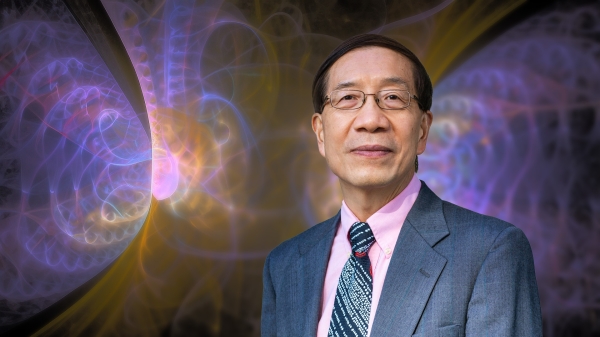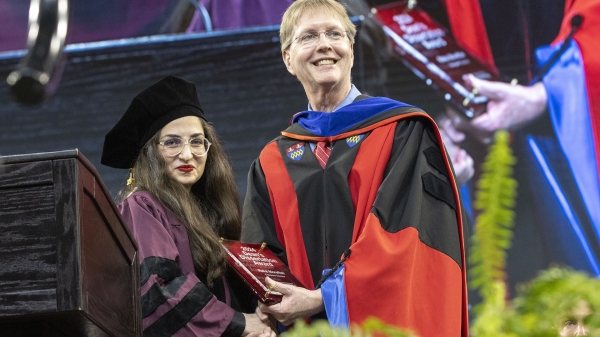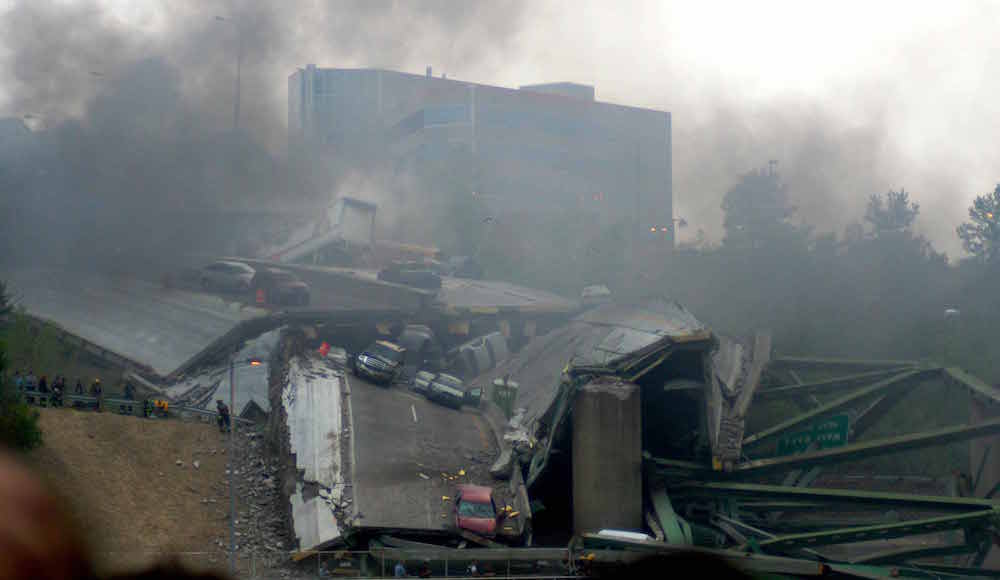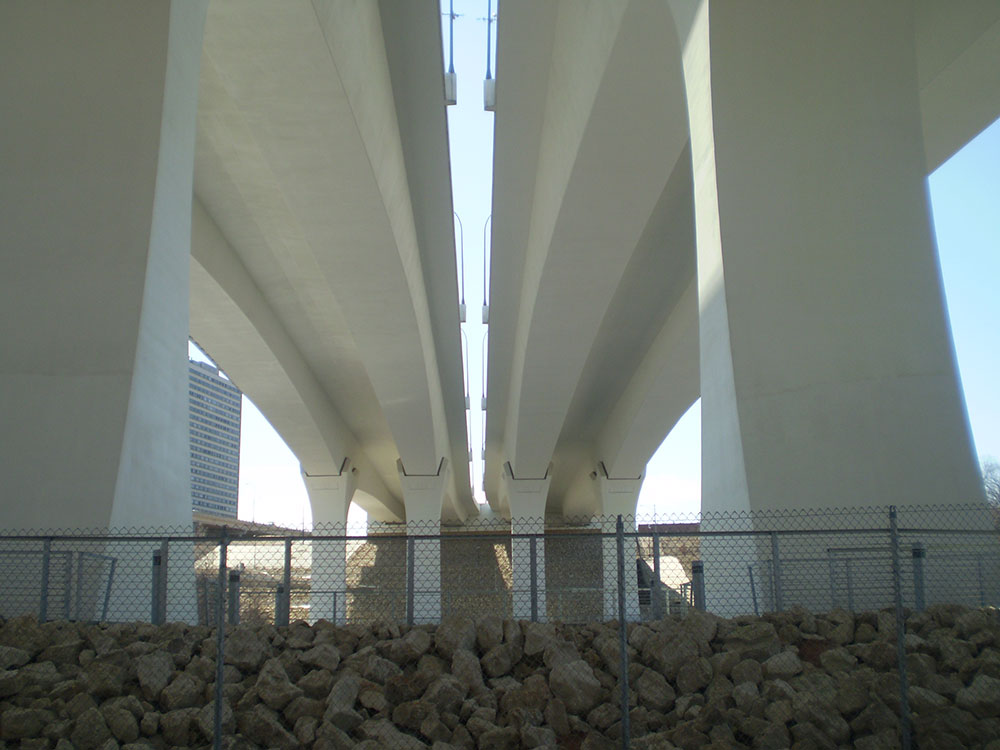On Aug. 1, 2007, 13 people in Minnesota never made it home from their evening commute. There wasn’t a bomb, a mass shooting or a natural disaster. These 13 deaths and 145 injuries were the result of a failed system.
That system — one that we use and take for granted every day — is our transportation infrastructure. Minnesota’s I-35W Mississippi River bridge had a structural failure and abruptly crumbled to the ground, taking cars and lives down with it. It was a sobering reminder that the roads, highways and bridges millions of Americans rely on daily are not indestructible. In fact, much of our transportation system in the United States is unfit to carry the load it bears.
About 40 percent of federal highways and major roads in the U.S. are not considered to be in good condition. Nearly 70,000 of the nation’s bridges are considered structurally deficient, while more than 98,000 are functionally obsoleteStructural deficiencies are characterized by deteriorated conditions of significant bridge elements and potentially reduced load-carrying capacity, but do not necessarily imply safety concerns. Functional obsolescence is characterized by bridges not meeting current design standards, such as lane width or number of lanes, relative to the traffic volume carried by the bridge., according to the Federal Highway Administration.
Our roads are in desperate need of a revamp. Researchers at ASU are paving the way to better transportation infrastructure that lasts longer, costs less and protects the environment as well as human safety.
The I-35W bridge collapsed suddenly, killing 13 people and injuring 145. Photo by Tony Webster/Flickr
Rubbery roads and sustainable cement
ASU engineering professor Kamil Kaloush tests and recommends improvements to pavement performance. His team found that materials for roads can be made better by including a special ingredient derived from cars themselves — recycled tires.
Producers process the tire scraps and grind them into a material called crumb rubber. The rubber reacts as an enhanced elastic component when mixed with asphalt cement. The mixture forms rubberized or asphalt rubber pavement. This is one of the projects Kaloush oversees as the director of the National Center of Excellence on SMART (Sustainable Materials and Renewable Technologies) Innovations at ASU.
Rubberized pavement has many benefits. Just like the egg in a recipe for chocolate chip cookies, rubber makes roads much more resistant to cracking. That translates to less maintenance over time, a smoother and safer ride for drivers.
“Reduced deformation and cracking translates into road-user benefits such as better ride quality, less fuel consumption, lower maintenance frequencies and safer roadways,” Kaloush said.
The asphalt-rubber mixture is cost-effective compared with conventional pavement and is better for the environment. Rubberized pavement is also stronger and better performing than traditional types, so it can be applied as a thinner layer, using less material. Because it uses recycled materials, rubberized pavement requires fewer natural resources to produce. Its smoother surface also reduces particle emissions from tire wear and tear, resulting in better air quality.
Because rubberized pavement is thinner than traditional types, it stores and gives off less heat. Researchers have shown this can help mitigate the urban heat-island effect, which happens when buildings and paved surfaces absorb and retain heat. That results in cooler temperatures for everyone, on and off the road.
ASU engineering professor Narayanan Neithalath is also developing new materials for infrastructure. Some of his research focuses on longer-lasting concrete and cement for roads, bridges, tunnels and dams.
Portland cement is the most commonly used material for these projects, but it lasts only 20 to 25 years and has an environmental footprint like a fleet of Hummers. Neithalath wants to replace Portland cement with a material that lasts twice as long and requires fewer resources to manufacture — call it the Prius of the concrete world.
Kaloush said effective transportation infrastructure is a balancing act of durability, safety and efficient mobility of people and goods. In the future, those challenges will be compounded by the clashing of two semi-trucks — climate change and a rapidly growing population.
Sensing danger
The I-35W bridge in Minnesota was originally designed to carry approximately 60,000 cars per day when it was built in 1967. By 2007 when the bridge collapsed, traffic had increased to about 160,000 cars per day. This heavier load, plus a design flaw that went overlooked for years, led to the bridge’s demise.
I-35W was a steel-truss bridge, a type known as “fracture-critical.” Like a line of dominoes, if one piece of the bridge fails, the whole structure will collapse. There are more than 12,600 bridges of the same design still in use all over the U.S., and they are growing older and weaker each day.
In 2015, the I-10 bridge to Los Angeles was toppled by a 100-year flooding event. The desert-dwelling structure was never built to withstand so much rain. But as climate change brings about more extreme weather, our roads, bridges and other infrastructure will be tested in unprecedented ways.
“A huge number of bridges are dangerous, as far as an engineer would view them. Some engineers would refuse to cross them or go underneath them, they’re that dangerous,” said ASU professor Tim James.
James is an economist who focuses on transportation infrastructure. He said there haven’t been significant improvements made to the U.S. interstate system since it was built in the 1930s. For comparison, most airplane fleets have been replaced three times over since our road system was built.
The main challenge with revamping roads is a lack of funding. Most money for the road system comes from taxes on gasoline. The federal tax is a fixed amount of 18.4 cents per gallon. That hasn’t changed in more than 20 years, aside from a 0.4 cent increase in 1993. States charge an additional tax that averages about 23.5 cents.
“The tax on gas has been the same for 25 or 30 years, and it’s miniscule,” James said. “Compared to European levels, it’s like peanuts.”
It will take a major increase in funding to repair the roads, but building more durable and less resource-intensive infrastructure can help keep costs down. We can also work to make our roads safer — a benefit that goes beyond dollar value.
Building brainy bridges
Neithalath’s team is hoping to advance a new area of infrastructure technology that borrows a technique from the medical field. Just like an electrocardiogram monitors the rhythm of a patient’s heart, Neithalath wants to develop sensors that monitor the health of our highways.
Some roads across the U.S. already use sensors. For example, the bridge that replaced Minnesota’s I-35W is self-monitoring, with 323 fiber-optic sensors embedded in the concrete.
But Neithalath’s team is working on a new, more accurate type of fiber-optic sensor. These are coated in chemicals that react with the pavement to measure markers of deterioration. Sensors detect the presence of chlorides and sulfates, then transmit their findings back to engineers.
“For example, if you’re putting a lot of salt on your bridge and it starts to go through and corrode the steel, my fiber-optic sensors will tell me how much salt is inside the concrete,” Neithalath said.
The new St. Anthony bridge in Minneapolis has 323 sensors embedded in the concrete. The 504-foot structure is also the only bridge in the U.S. to be illuminated by LED lights. Photo by Ruin Raider/Flickr
Before sensors, the only way to find out a road’s health was to sever it open and peer between the cracks, or wait for a catastrophic failure. This new approach is like preventative medicine. As soon as the sensors detect vulnerability, they diagnose the problem and alert engineers that repairs are needed. Engineers can then order more tests or decide on a course of treatment.
Catching corrosion early on is especially important as more people move into cities. With a growing population, it becomes difficult to shut down roads and bridges for major repairs. With this in mind, ASU researchers want to build infrastructure that puts safety and sustainability on cruise control.
“We can use less resources, we can make bridges last longer and we can make them less risky,” Neithalath said. “Sustainability is a collaboration of all these different things.”
More Science and technology
Extreme HGTV: Students to learn how to design habitats for living, working in space
Architecture students at Arizona State University already learn how to design spaces for many kinds of environments, and now they can tackle one of the biggest habitat challenges — space architecture…

Human brains teach AI new skills
Artificial intelligence, or AI, is rapidly advancing, but it hasn’t yet outpaced human intelligence. Our brains’ capacity for adaptability and imagination has allowed us to overcome challenges and…

Doctoral students cruise into roles as computer engineering innovators
Raha Moraffah is grateful for her experiences as a doctoral student in the School of Computing and Augmented Intelligence, part of the Ira A. Fulton Schools of Engineering at Arizona State University…


